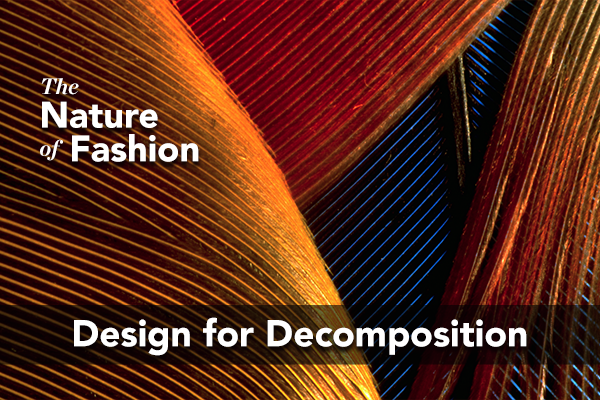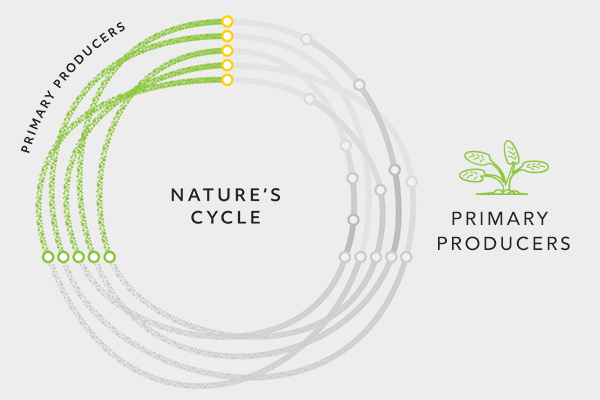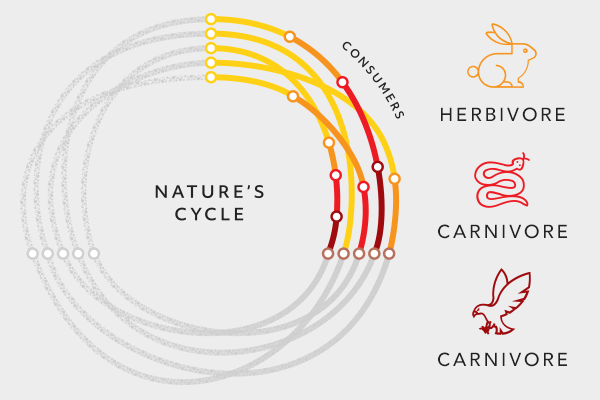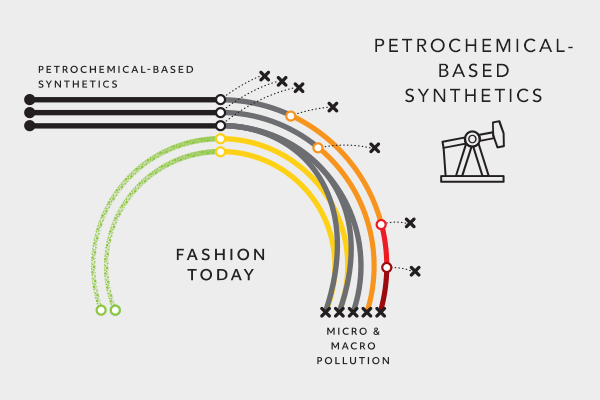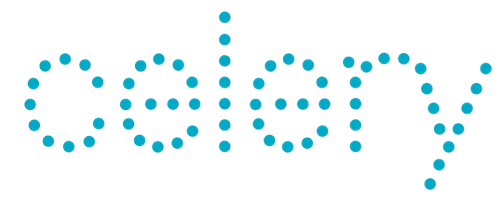Systems change is needed now.
Industry must consider how
it fits into the biosphere.
We are leading a new standard for industrial symbiosis,
starting with designing for decomposition
in the fashion sector.
Our Pathway to Systems Change

Everything we do一all of our industry and economic activity一exists within the planetary natural system. We are uniting a global team of leaders to create new systems of change.

By learning from nature, we are proving it’s possible to turn waste back into something useful for the biosphere; and in doing so, we are demonstrating the value for a regenerative economy.

Through industry research and connecting collaborators through bold initiatives, we are paving a pathway for industries to create benefits for climate stability, biodiversity, and social equity.
Pilot Projects
The first pilot series initiative stems from the Nature of Fashion report, which identified decomposition as the missing piece from industry. The multi-year Design for Decomposition collaboration has four main objectives:
- Understand emerging decomposition options
- Demonstrate affordable, scalable strategies
- Understand the biology and chemistry of decomposition
- Prove it works and change minds
Such an ambitious aim requires partners who are courageous and have vision. Get in touch with us if you are ready for change!
Featured Pilot: Design for Decomposition
The Biomimicry Institute is leading a two-year, multi-million dollar project to demonstrate scalable new pathways for ~92 million tonnes of fashion waste discarded annually by embracing true decomposition—the way leaves break down into soil—that builds healthy ecosystems.
The Laudes Foundation has provided catalytic funding for this ambitious project.
Learn more about Design for Decomposition here.
Industry Reports
We know that designers and brands want to put more beauty into the world. Nature is the perfect mentor to show them how. In our first industry report, we offered an analysis on how the fashion industry would look if it functioned like a natural ecosystem. The Nature of Fashion: Moving Towards a Regenerative System offers steps and recommendations to investors, funders, and fashion brands that will enable a new fashion ecosystem to thrive and flourish within our planetary boundaries. It proposes a dramatic yet entirely possible approach for global companies to operate in conjunction with local economies.
The Nature of Fashion report identified decomposition as a critical part of nature’s material cycles that is missing from current industrial thinking, and “design for decomposition and dispersal” as the quickest route to a regenerative and equitable fashion industry. After proving that advanced decomposition is viable locally, such as in the approach taken for our first pilot series initiative, we plan to prove that this system change can scale globally and more industry reports will follow.
Featured Report: The Nature of Fashion
A new report reveals how emulating nature’s lessons in the fashion industry can enhance ecosystems to boost biodiversity, build soil, support communities, and clean up existing pollution.
Read the report here.
“We are thrilled to support this consortium led by Biomimicry Institute, and eagerly await the results of their game-changing pilots to scale bio-compatible solutions for the fashion industry at large.”
 – Anita Chester,
– Anita Chester,
Head of Materials at Laudes Foundation
Support the Next Generation
of Nature-Inspired Innovators
By donating to the Biomimicry Institute, you help us empower more nature-inspired innovators. Together, we will build a strong and sustainable global community dedicated to eliminating the need for extractive industries and revitalizing degraded ecosystems.

